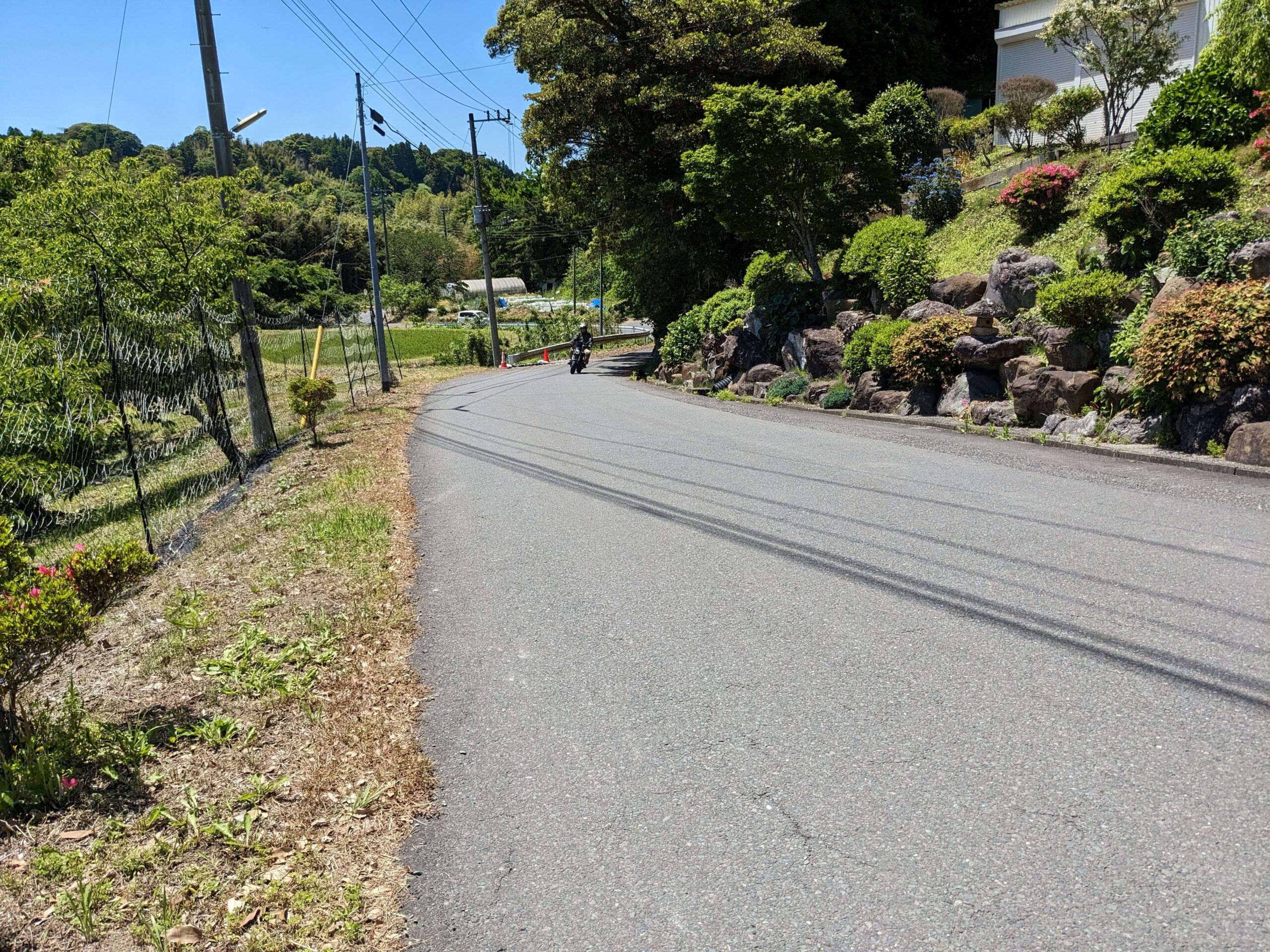Living in the countryside of Japan, I have re-learned how to drive. Now I can avoid tanuki and tractors and stay out of ditches most of the time, but I can’t drive in the city, where the hazards come one after another and are usually human. Two completely different driving environments!
It makes me cranky when city people come out and drive stupidly, so here are my top tips for getting around safely and with good manners when you rent a car and go for a Sunday drive.

1. Drive on your own side
On narrow roads it’s not always easy to tell where the center is because many of our roads don’t have lane markings or any kind of visible markings. So look for the subtle join in the pavement. If there is one, you are on a two-lane road.
If there’s no center line and no join, the road is still two-way. You may need to do some maneuvering to let oncoming traffic pass you. Keep an eye out for spots where the road widens a little to let cars pass safely.

2. Ditches be crazy
Don’t assume that grass on the verge is safe to drive on. Country roads are often lined with open drainage ditches. Because its up to the residents to keep these ditches clear, there are varying levels of visibility. The one in this picture has been recently mown, but it’s usually hidden behind a screen of tall grass.

3. Use the mirrors
These convex mirrors on orange poles help you see around blind curves and corners. We have a lot of those out here, so learning to glance at the mirrors for oncoming traffic will save you surprises and avoid crashes.
It’s also a good idea to use your car’s own mirrors, especially the side ones to gauge your distance from the ditches.

4. Beware of bad spots
The roads here are less maintained than in the cities, and we effect repairs ourselves as necessary. The road in this photo subsides into the river over and over again. This one is marked but many are not. The city comes out once in a while and patches it up, but usually there’s just a barricade of cones and sandbags. Potholes get filled by the community groups when they get bad enough to damage our cars. If you see spray paint on the road, that’s a warning of an uneven place or a hole.

5. Guard your speed
Guardrails are inconsistently placed. Here’s a riverbank with none and there’s a two meter drop into the water. I can think of three similar places within 500 meters of my house. Recently a motorcyclist missed a curve in the dark and went flying into the river. He survived; the bike did not. Drive at a safe speed; these roads are not a racetrack, though they are a lot of fun to drive.

6. Watch for obstacles
By obstacles, I mean pedestrians, cyclists, animals, and more commonly, vehicles. In this photo, a maintenance service van is stopped next to a farm vehicle. Sometimes the farm equipment crawls along to its destination, or you’ll see a bunch of kei trucks parked by the side of a rice paddy that’s being worked. Slow down and make your way around the obstacle with a wide berth if possible.
7. Don’t be an obstacle
If you want to pull off for a picture (so many gorgeous scenic views!) or to check your GPS, don’t stop in the middle of the road. Find a safe place to pull off the road – not a ditch, not a blind curve, not a single lane road. Though the roads are not highly trafficked, you are not the only one on them. Believe me, someone is going to pull up behind you and be annoyed. It’s probably me.

8. Don’t be a dick
Though it seems rather desolate in Japan’s depopulating countryside, people live here. We maintain the roads and public spaces, as well as our private ones. Don’t take home “abandoned items” you encounter; they are usually not abandoned. Please carry your trash home rather than throwing it in our yards and roadsides.
When you use these eight points to make your country drive safe and pleasant, it will be like taking a vacation from the city.






